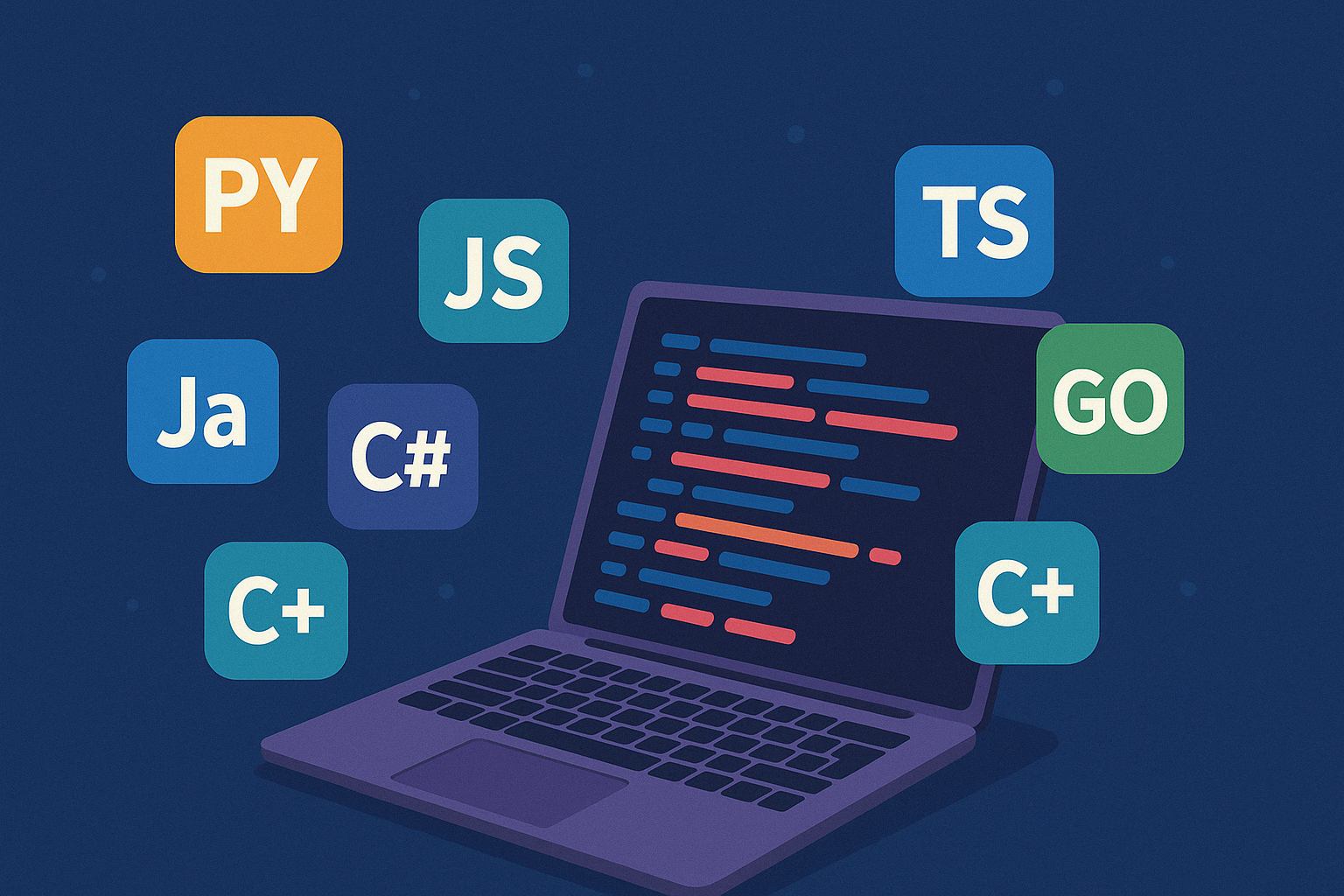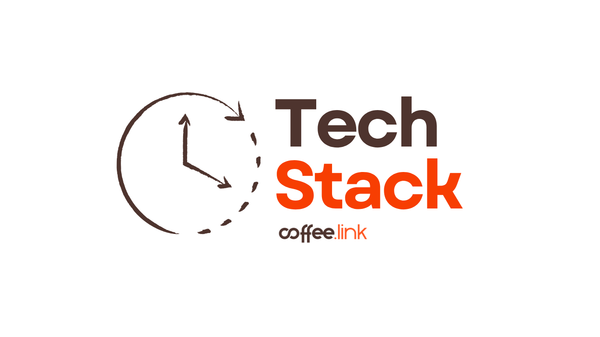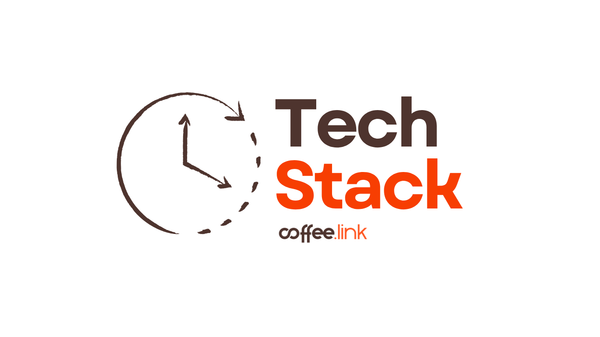Finding the right programming language is both an art and a science. As development paradigms evolve, so do our tools for building tomorrow's digital landscape.
It's early morning in San Francisco's tech district. Developers gather in cafés, engrossed in conversations about type systems, memory management models, and language ecosystems. The passion is palpable—these aren't just technical choices but philosophies that shape how we solve problems.
Here at coffee.link, we understand that selecting a programming language is deeply personal yet consequential. Each language represents a distinct approach to problem-solving, with its own strengths and trade-offs that resonate differently depending on your context and goals.
As we move further into 2025, let's explore the languages that define modern development—examining which ones offer the optimal balance of ergonomics, performance, and community support for various development scenarios.
Today's Programming Ecosystem: A Discerning Guide
The modern developer must navigate a rich ecosystem of languages, each designed with specific domains and philosophies in mind.
The Established Classics: Foundations of Modern Development
JavaScript/TypeScript: Web's Universal Language
JavaScript remains the undisputed foundation of web development, powering over 98% of websites globally. TypeScript—its statically-typed superset—has revolutionized how developers work with JavaScript at scale, adding a layer of predictability and safety that the original language lacked.
// TypeScript example
interface User {
id: number;
name: string;
email: string;
preferences?: {
theme: 'light' | 'dark';
notifications: boolean;
};
}
function sendWelcomeEmail(user: User): void {
const greeting = `Hello, ${user.name}!`;
const theme = user.preferences?.theme ?? 'light';
console.log(`Sending email to ${user.email} with ${theme} theme`);
// Email sending logic here
}
// Type safety ensures we don't forget required properties
const newUser: User = {
id: 1001,
name: "Jamie Smith",
email: "[email protected]"
};
sendWelcomeEmail(newUser);
TypeScript's sophisticated type system acts as an intelligent filter—catching errors at compile time rather than letting them slip through to runtime. This attention to detail makes it particularly valuable for large codebases where a single overlooked error could cause cascading failures. Its seamless integration with modern JavaScript features and intelligent IDE support has transformed it from a niche alternative to the preferred choice for enterprise applications and teams who value predictability and maintainability.
In practice, TypeScript's static typing prevents numerous common bugs that plague JavaScript applications, from simple typos to complex type mismatches. The initial investment in adding type annotations pays dividends throughout a project's lifecycle, especially during refactoring or when onboarding new team members.
Python: The Universal Adapter
Python continues to be the versatile cornerstone of programming languages—approachable, adaptable, and satisfying to a broad audience. With its uncontested dominance in data science, machine learning, and automation, Python has achieved what few languages ever do: becoming both the beginner's first choice and the expert's daily driver.
# Python example
import pandas as pd
from sklearn.model_selection import train_test_split
from sklearn.ensemble import RandomForestClassifier
from sklearn.metrics import accuracy_score
# Load and prepare data
data = pd.read_csv('customer_data.csv')
X = data.drop('will_purchase', axis=1)
y = data['will_purchase']
# Split data into training and testing sets
X_train, X_test, y_train, y_test = train_test_split(X, y, test_size=0.2, random_state=42)
# Train a model
model = RandomForestClassifier(n_estimators=100)
model.fit(X_train, y_train)
# Make predictions and evaluate
predictions = model.predict(X_test)
accuracy = accuracy_score(y_test, predictions)
print(f"Model accuracy: {accuracy:.2f}")
Python's "batteries included" philosophy anticipates developer needs with remarkable intuition. Its focus on human readability has created a rare programming language that reads almost like natural English, making it a perpetual favorite for rapid development, prototyping, and those crucial moments when you need to explain your code to non-technical stakeholders.
According to the 2024 Stack Overflow Developer Survey, Python remains the most wanted language for the eighth consecutive year, with over 65% of developers who don't currently use it expressing interest in learning it. This persistent appeal stems from its versatility and relatively flat learning curve combined with powerful capabilities.
Java
Java remains a cornerstone in enterprise applications, Android development, and server-side technologies. Its platform independence and strong ecosystem ensure its relevance in 2025.
// Java example
import java.util.List;
import java.util.stream.Collectors;
public class OrderProcessor {
public static void main(String[] args) {
List<Order> orders = List.of(
new Order(1, "John", 150.0, "PENDING"),
new Order(2, "Alice", 75.0, "SHIPPED"),
new Order(3, "Bob", 225.0, "DELIVERED"),
new Order(4, "Carol", 300.0, "PENDING")
);
// Process pending orders
List<Order> pendingOrders = orders.stream()
.filter(order -> "PENDING".equals(order.status))
.collect(Collectors.toList());
double totalPendingAmount = pendingOrders.stream()
.mapToDouble(Order::getAmount)
.sum();
System.out.println("Pending orders: " + pendingOrders.size());
System.out.println("Total pending amount: $" + totalPendingAmount);
}
}
class Order {
private int id;
private String customerName;
private double amount;
private String status;
// Constructor, getters, setters
public Order(int id, String customerName, double amount, String status) {
this.id = id;
this.customerName = customerName;
this.amount = amount;
this.status = status;
}
public double getAmount() {
return amount;
}
// Other getters and setters omitted for brevity
}
Despite criticism for its verbosity, Java's stability, backward compatibility, and comprehensive frameworks like Spring Boot ensure its continued dominance in enterprise development.
The Rising Stars: Innovation at Scale
Rust: The Systems Revolution
Rust has continued its meteoric rise with the intensity of a true revolution. Initially intimidating but ultimately rewarding, Rust has found its devoted following particularly in systems programming, where memory safety without the performance overhead of garbage collection represents a fundamental breakthrough.
// Rust example
use std::collections::HashMap;
#[derive(Debug)]
struct CacheConfig {
max_size: usize,
ttl_seconds: u64,
}
struct Cache<K, V> {
config: CacheConfig,
store: HashMap<K, (V, std::time::Instant)>,
}
impl<K: std::hash::Hash + Eq, V: Clone> Cache<K, V> {
fn new(config: CacheConfig) -> Self {
Cache {
config,
store: HashMap::with_capacity(config.max_size),
}
}
fn get(&self, key: &K) -> Option<V> {
self.store.get(key).and_then(|(value, timestamp)| {
let elapsed = timestamp.elapsed().as_secs();
if elapsed < self.config.ttl_seconds {
Some(value.clone())
} else {
None // Entry has expired
}
})
}
fn set(&mut self, key: K, value: V) {
// Handle max size and potentially evict older entries
if self.store.len() >= self.config.max_size {
// Simple eviction strategy: clear all
self.store.clear();
}
self.store.insert(key, (value, std::time::Instant::now()));
}
}
fn main() {
let config = CacheConfig {
max_size: 100,
ttl_seconds: 300, // 5 minutes
};
let mut cache: Cache<String, Vec<u8>> = Cache::new(config);
// Example usage
cache.set("important_data".to_string(), vec![1, 2, 3, 4]);
if let Some(data) = cache.get(&"important_data".to_string()) {
println!("Retrieved data with length: {}", data.len());
} else {
println!("Data not found or expired");
}
}
Rust's revolutionary approach to memory management through its ownership system achieves what was long thought impossible: combining high-level safety guarantees with low-level performance. Its emphasis on catching errors at compile time rather than runtime has made it increasingly popular for performance-critical applications, embedded systems, and security-focused projects.
The language has seen remarkable adoption growth, with the Rust Foundation reporting a 58% increase in enterprise usage from 2022 to 2024. Major companies including Mozilla, Microsoft, Amazon, and Google have integrated Rust into critical infrastructure projects, validating its approach to memory safety without garbage collection.
Go (Golang)
Go has firmly established itself in cloud infrastructure, microservices, and DevOps tooling due to its simplicity and excellent concurrency model.
// Go example
package main
import (
"context"
"fmt"
"log"
"net/http"
"os"
"os/signal"
"sync"
"syscall"
"time"
)
func main() {
// Create a new server
mux := http.NewServeMux()
mux.HandleFunc("/", func(w http.ResponseWriter, r *http.Request) {
time.Sleep(200 * time.Millisecond) // Simulate work
fmt.Fprintf(w, "Hello, World!")
})
server := &http.Server{
Addr: ":8080",
Handler: mux,
}
// Create a context that will be canceled on SIGINT or SIGTERM
ctx, stop := signal.NotifyContext(context.Background(), os.Interrupt, syscall.SIGTERM)
defer stop()
// Start the server in a goroutine
var wg sync.WaitGroup
wg.Add(1)
go func() {
defer wg.Done()
log.Println("Starting server on :8080")
if err := server.ListenAndServe(); err != http.ErrServerClosed {
log.Fatalf("HTTP server error: %v", err)
}
log.Println("Server stopped")
}()
// Wait for interrupt signal
<-ctx.Done()
log.Println("Shutdown signal received")
// Create a deadline for graceful shutdown
shutdownCtx, cancel := context.WithTimeout(context.Background(), 10*time.Second)
defer cancel()
if err := server.Shutdown(shutdownCtx); err != nil {
log.Printf("Error during server shutdown: %v", err)
}
// Wait for server goroutine to finish
wg.Wait()
log.Println("Server gracefully stopped")
}
Go's straightforward syntax, built-in concurrency patterns, and excellent standard library make it particularly well-suited for cloud-native applications and services.
Kotlin
Kotlin has become the preferred language for Android development and is gaining traction in server-side applications as a more expressive alternative to Java.
// Kotlin example
data class Product(
val id: String,
val name: String,
val price: Double,
val categories: List<String> = listOf(),
val isAvailable: Boolean = true
)
class ProductService(private val productRepository: ProductRepository) {
fun getDiscountedProducts(minDiscount: Double = 0.1): List<DiscountedProduct> {
return productRepository.getAllProducts()
.filter { it.isAvailable }
.mapNotNull { product ->
val discount = calculateDiscount(product)
if (discount >= minDiscount) {
DiscountedProduct(
product = product,
discountPercentage = discount,
finalPrice = product.price * (1 - discount)
)
} else null
}
.sortedByDescending { it.discountPercentage }
}
private fun calculateDiscount(product: Product): Double {
// Discount calculation logic here
return when {
"electronics" in product.categories -> 0.15
"clothing" in product.categories -> 0.25
"clearance" in product.categories -> 0.50
else -> 0.05
}
}
}
data class DiscountedProduct(
val product: Product,
val discountPercentage: Double,
val finalPrice: Double
)
interface ProductRepository {
fun getAllProducts(): List<Product>
}
Kotlin's null safety, concise syntax, and interoperability with Java have made it a compelling choice for both new projects and gradual migrations from Java codebases.
Emerging Contenders
Swift
Swift continues to be the primary language for Apple ecosystem development but has expanded its reach to server-side applications as well.
// Swift example
import Foundation
struct GeoPoint: Codable, Equatable {
let latitude: Double
let longitude: Double
func distance(to other: GeoPoint) -> Double {
// Simple Euclidean distance for example purposes
// Real implementation would use Haversine formula
let latDiff = latitude - other.latitude
let lonDiff = longitude - other.longitude
return sqrt(latDiff * latDiff + lonDiff * lonDiff)
}
}
class LocationService {
private var cachedLocations: [String: GeoPoint] = [:]
private let locationProvider: LocationProvider
init(provider: LocationProvider) {
self.locationProvider = provider
}
func getNearbyPlaces(to userLocation: GeoPoint, maxDistance: Double) async throws -> [Place] {
let allPlaces = try await locationProvider.getAllPlaces()
return allPlaces.filter { place in
guard let placeLocation = place.location else { return false }
return userLocation.distance(to: placeLocation) <= maxDistance
}.sorted { a, b in
guard let locA = a.location, let locB = b.location else { return false }
return userLocation.distance(to: locA) < userLocation.distance(to: locB)
}
}
}
protocol LocationProvider {
func getAllPlaces() async throws -> [Place]
}
struct Place: Identifiable, Codable {
let id: String
let name: String
let location: GeoPoint?
let category: PlaceCategory
let rating: Double?
enum PlaceCategory: String, Codable {
case restaurant
case cafe
case shopping
case entertainment
case other
}
}
Swift's focus on safety, performance, and developer ergonomics makes it an excellent language not just for iOS and macOS development, but increasingly for cross-platform applications.
Julia
Julia has found its niche in scientific computing and numerical analysis, offering performance comparable to C with the ease of use similar to Python.
# Julia example
using Plots
using Distributions
using DataFrames
using Statistics
# Simulate a stochastic process
function simulate_brownian_motion(n_steps::Int, dt::Float64)
# Initialize random walk
position = zeros(n_steps)
# Standard Brownian motion has variance = time
normal_dist = Normal(0, sqrt(dt))
# Simulate the random walk
for i in 2:n_steps
# Position changes by a random amount
position[i] = position[i-1] + rand(normal_dist)
end
# Create time vector
time = collect(0:dt:(n_steps-1)*dt)
return time, position
end
# Run multiple simulations and analyze
function analyze_simulations(n_sims::Int, n_steps::Int, dt::Float64)
# Store final positions from all simulations
final_positions = zeros(n_sims)
# Create plot
p = plot(title="Brownian Motion Simulations",
xlabel="Time", ylabel="Position",
legend=false, alpha=0.3)
for i in 1:n_sims
time, position = simulate_brownian_motion(n_steps, dt)
# Store final position
final_positions[i] = position[end]
# Add to plot (first 10 only to avoid cluttering)
if i <= 10
plot!(p, time, position)
end
end
# Calculate statistics
mean_final = mean(final_positions)
std_final = std(final_positions)
println("Statistics after $(n_steps*dt) time units:")
println("Mean final position: $mean_final")
println("Standard deviation: $std_final")
# Theoretical standard deviation for Brownian motion is sqrt(t)
theoretical_std = sqrt(n_steps*dt)
println("Theoretical standard deviation: $theoretical_std")
return p, final_positions
end
# Run analysis
n_simulations = 1000
n_steps = 1000
dt = 0.01
plot, results = analyze_simulations(n_simulations, n_steps, dt)
display(plot)
# Plot histogram of final positions
histogram(results, bins=30,
title="Distribution of Final Positions",
xlabel="Position", ylabel="Frequency",
alpha=0.7, legend=false)
Julia's ability to solve the "two-language problem" (needing a high-level language for development and a low-level language for performance) has made it increasingly popular in scientific and numerical computing.
Dart
Driven by Flutter's popularity, Dart has gained significant traction in cross-platform mobile development.
// Dart example
import 'package:flutter/material.dart';
import 'dart:async';
import 'dart:convert';
import 'package:http/http.dart' as http;
void main() {
runApp(WeatherApp());
}
class WeatherApp extends StatelessWidget {
@override
Widget build(BuildContext context) {
return MaterialApp(
title: 'Weather Forecast',
theme: ThemeData(
primarySwatch: Colors.blue,
visualDensity: VisualDensity.adaptivePlatformDensity,
),
home: WeatherScreen(),
);
}
}
class WeatherScreen extends StatefulWidget {
@override
_WeatherScreenState createState() => _WeatherScreenState();
}
class _WeatherScreenState extends State<WeatherScreen> {
final TextEditingController _cityController = TextEditingController();
WeatherData? _weatherData;
bool _isLoading = false;
String? _errorMessage;
Future<void> _fetchWeatherData(String city) async {
setState(() {
_isLoading = true;
_errorMessage = null;
});
try {
// Note: This is a mock endpoint for example purposes
final response = await http.get(
Uri.parse('https://api.example.com/weather?city=$city'),
);
if (response.statusCode == 200) {
setState(() {
_weatherData = WeatherData.fromJson(json.decode(response.body));
_isLoading = false;
});
} else {
setState(() {
_errorMessage = 'Failed to load weather data';
_isLoading = false;
});
}
} catch (e) {
setState(() {
_errorMessage = 'Error: ${e.toString()}';
_isLoading = false;
});
}
}
@override
Widget build(BuildContext context) {
return Scaffold(
appBar: AppBar(
title: Text('Weather Forecast'),
),
body: Padding(
padding: const EdgeInsets.all(16.0),
child: Column(
children: [
TextField(
controller: _cityController,
decoration: InputDecoration(
labelText: 'Enter city name',
suffixIcon: IconButton(
icon: Icon(Icons.search),
onPressed: () {
if (_cityController.text.isNotEmpty) {
_fetchWeatherData(_cityController.text);
}
},
),
),
),
SizedBox(height: 20),
if (_isLoading)
CircularProgressIndicator()
else if (_errorMessage != null)
Text(_errorMessage!, style: TextStyle(color: Colors.red))
else if (_weatherData != null)
WeatherCard(weatherData: _weatherData!),
],
),
),
);
}
}
class WeatherCard extends StatelessWidget {
final WeatherData weatherData;
const WeatherCard({Key? key, required this.weatherData}) : super(key: key);
@override
Widget build(BuildContext context) {
return Card(
elevation: 4,
child: Padding(
padding: const EdgeInsets.all(16.0),
child: Column(
children: [
Text(
weatherData.city,
style: TextStyle(fontSize: 24, fontWeight: FontWeight.bold),
),
SizedBox(height: 10),
Text(
'${weatherData.temperature}°C',
style: TextStyle(fontSize: 36),
),
Text(
weatherData.description,
style: TextStyle(fontSize: 18),
),
SizedBox(height: 20),
Row(
mainAxisAlignment: MainAxisAlignment.spaceAround,
children: [
WeatherDetail(
icon: Icons.water_drop,
value: '${weatherData.humidity}%',
label: 'Humidity',
),
WeatherDetail(
icon: Icons.air,
value: '${weatherData.windSpeed} km/h',
label: 'Wind',
),
],
),
],
),
),
);
}
}
class WeatherDetail extends StatelessWidget {
final IconData icon;
final String value;
final String label;
const WeatherDetail({
Key? key,
required this.icon,
required this.value,
required this.label,
}) : super(key: key);
@override
Widget build(BuildContext context) {
return Column(
children: [
Icon(icon, size: 30),
SizedBox(height: 8),
Text(value, style: TextStyle(fontSize: 16, fontWeight: FontWeight.bold)),
Text(label, style: TextStyle(fontSize: 14)),
],
);
}
}
class WeatherData {
final String city;
final double temperature;
final String description;
final int humidity;
final double windSpeed;
WeatherData({
required this.city,
required this.temperature,
required this.description,
required this.humidity,
required this.windSpeed,
});
factory WeatherData.fromJson(Map<String, dynamic> json) {
return WeatherData(
city: json['city'],
temperature: json['temperature'].toDouble(),
description: json['description'],
humidity: json['humidity'],
windSpeed: json['windSpeed'].toDouble(),
);
}
}
Dart's reactive programming model and strong typing make it particularly well-suited for UI development, especially with Flutter's widget-based approach.
The Comparative Landscape: What Sets Languages Apart
What distinguishes good languages from great ones? Let's examine the critical dimensions that define the modern programming experience.
Performance: Raw Speed and Efficiency
When it comes to pure execution speed, Rust and C++ continue to lead the field, with Go and Java following closely behind. The performance landscape, however, has become increasingly nuanced as optimization techniques grow more sophisticated across all languages.
Just-in-time (JIT) compilation in JavaScript engines like V8 has significantly narrowed the gap between interpreted and compiled languages, demonstrating how modern techniques can transform even traditionally slower languages.
TypeScript, while ultimately compiling to JavaScript, provides that valuable combination of immediate familiarity and long-term benefits through its static type checking—catching errors before runtime while enabling superior tooling and optimization opportunities that pure JavaScript simply cannot match.
Developer Experience: Daily Productivity
For the code we write day in and day out, developer experience matters as much as raw performance. Python and JavaScript/TypeScript remain the productivity champions, offering quick iteration cycles and vast ecosystems of libraries and frameworks that make almost any task achievable with minimal friction.
The GitHub State of the Octoverse report for 2024 confirms this trend, showing that developers who work with TypeScript and Python consistently ship features faster and with fewer critical bugs than those working with lower-level languages. However, this advantage diminishes as projects scale up and performance requirements become more stringent.
Safety and Reliability: Long-term Value
Long after the initial development phase has ended, code must continue to run reliably in production. Here, Rust stands alone in its approach to memory safety without garbage collection, using its ownership system to prevent common bugs at compile time.
TypeScript brings similar benefits to the JavaScript ecosystem, catching type-related errors early in the development process and providing the kind of safety net that makes ambitious refactors possible without the constant fear of breaking production.
The Future Horizon: Emerging Trends in Language Design
Language designers continue to push boundaries, exploring new paradigms that may fundamentally change how we write code.
As we look toward the horizon, several key trends are shaping how programming languages will evolve in the coming years:
The Safety-First Revolution
Languages with strong type systems and compile-time guarantees are fundamentally changing developer expectations. As software complexity increases and systems become more interconnected, preventative approaches to correctness are no longer optional luxuries—they're becoming essential foundations.
"Five years ago, dynamic typing was seen as more productive. Today, that equation has flipped completely," according to research published in IEEE Software in 2024. "The productivity gains from catching errors at compile time rather than in production are simply too substantial to ignore, especially as systems grow in complexity."
The Pursuit of Developer Joy
Modern language designers have recognized that safety doesn't have to come at the expense of developer experience. Today's most exciting languages find ways to be both safe and delightful to use.
Features like pattern matching, expressive type systems, and intelligent handling of nullability are making even the most stringent languages feel natural and intuitive. This "ergonomics without compromise" approach is perhaps the most significant shift in language design philosophy over the past decade.
Domain-Specific Brilliance
While general-purpose languages continue to evolve, we're seeing an explosion of specialized languages optimized for particular domains. From Solidity for blockchain to Swift for Apple ecosystems, these specialized tools are allowing developers to express domain-specific concepts with unprecedented clarity and precision.
The Cross-Platform Promise
The holy grail of "write once, run anywhere" continues to drive innovation, with languages and frameworks that enable seamless cross-platform development gaining significant traction. These technologies are addressing the long-standing challenge of maintaining consistent behavior across increasingly diverse deployment targets.
Finding Your Optimal Tool: A Strategic Approach
The right programming language acts as an extension of your thought process rather than an obstacle to overcome.
As we've explored the landscape of programming languages in 2025, two options consistently stand out for their exceptional balance of power, safety, and developer experience.
TypeScript has emerged as the versatile foundation of modern web development—accessible enough for beginners yet sophisticated enough for experts. It offers the familiarity of JavaScript but with a remarkably more stable foundation thanks to its sophisticated type system. For teams building anything from simple websites to complex enterprise applications, TypeScript provides that rare combination of immediate productivity and long-term maintainability.
Meanwhile, Rust continues to be the technical breakthrough that inspires passionate devotion among its adherents. With its combination of memory safety, performance, and compile-time guarantees, Rust has fundamentally changed expectations about what systems programming can be. No longer must developers choose between speed and safety—Rust delivers both in a package that, while initially challenging to master, rewards persistence with unprecedented reliability.
Yet the optimal programming language remains deeply contextual. Some projects naturally call for the gentle, approachable nature of Python, while others demand the industrial-strength reliability of Java or the elegant simplicity of Go.
The JetBrains Developer Ecosystem Survey 2024 reveals a clear trend: polyglot programming is now the norm rather than the exception. Over 78% of professional developers regularly use three or more programming languages in their work. This flexibility to select the right tool for each task—rather than forcing one language to solve every problem—has become essential in modern software development.
As you continue your journey through the world of programming, approach languages with curious enthusiasm. Explore widely, develop discernment, and discover which approaches resonate most strongly with your development style and values.
Most importantly, remember that whether you're enjoying a thoughtful moment at your local coffee shop or immersed in your IDE writing code, the most profound satisfaction comes from the same source: the appreciation of craft, the attention to detail, and the joy of creating something exceptional that others will experience and enjoy.
After all, both great code and great design serve the same ultimate purpose—to solve problems elegantly and create moments of delight in an increasingly complex world.








